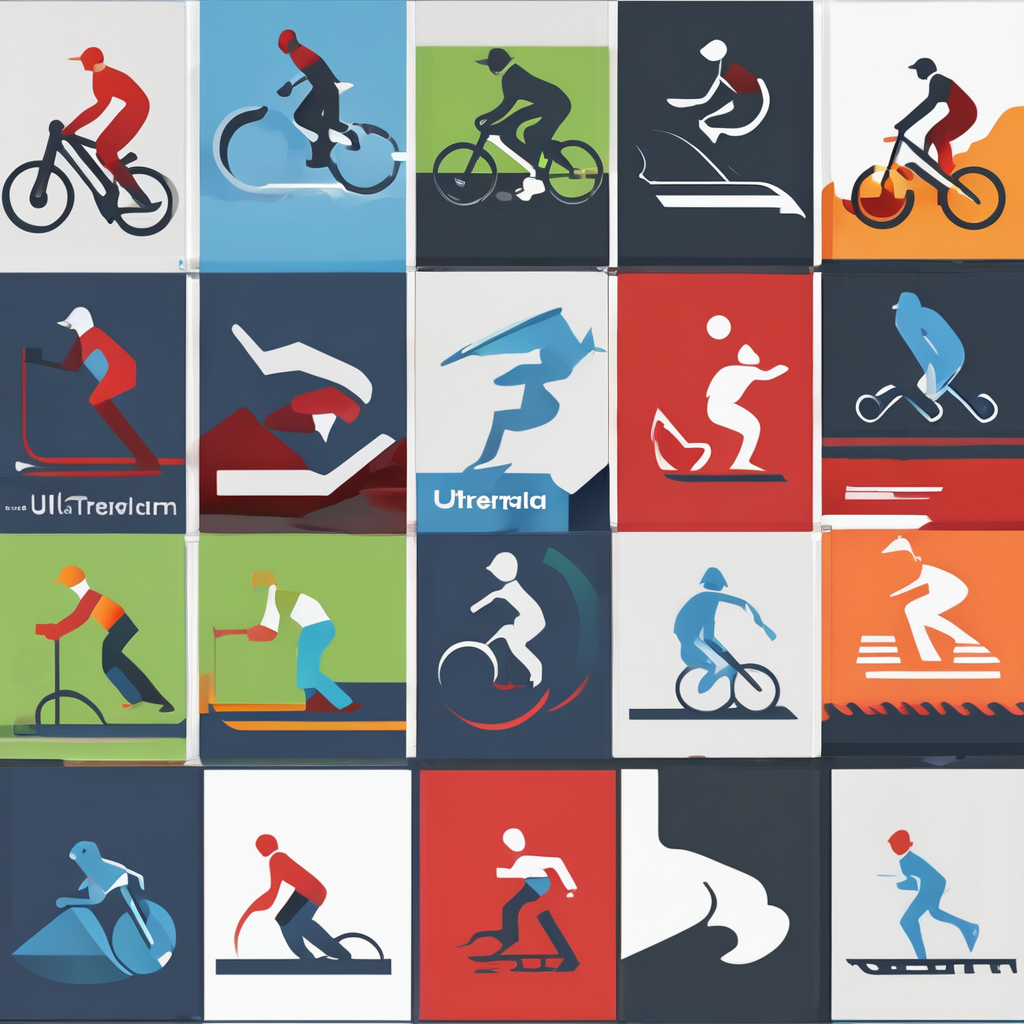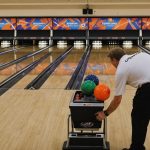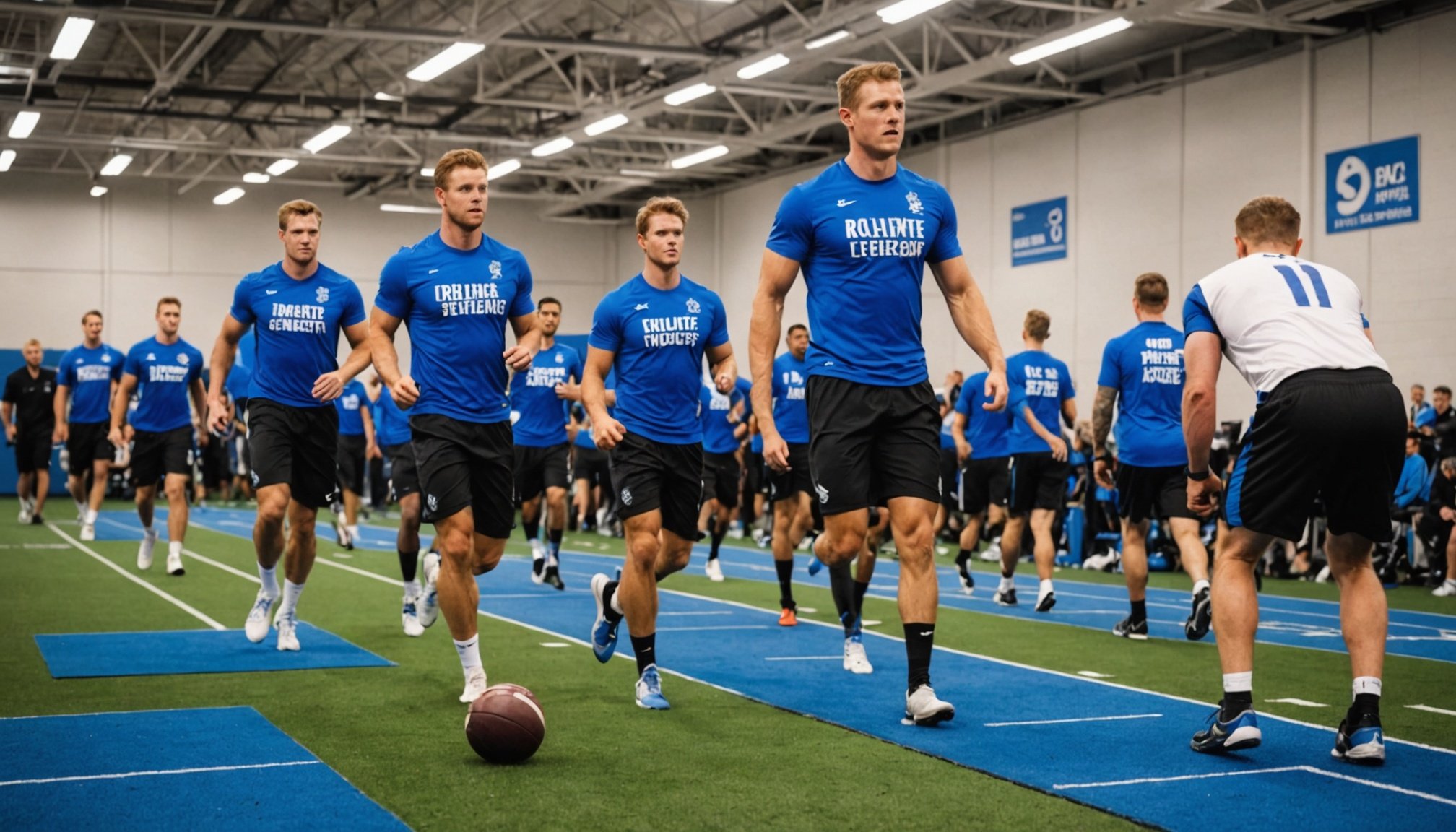Introduction to Off-Season Conditioning Strategies
Off-season conditioning is essential in maintaining and enhancing sports performance. Unlike in-season training, which focuses on peak performance and recovery, the off-season provides athletes the opportunity to address weaknesses and build their strengths. This period is typically characterised by a structured and comprehensive training regimen. It includes strength training, cardiovascular exercises, and skill development. UK sports teams, in particular, have been focusing significantly on this aspect, understanding its pivotal role in achieving successful outcomes during the competitive season.
Embracing off-season conditioning allows for a comprehensive approach to athlete development. Sports performance improves as athletes enhance their physical abilities, foster recovery, and prevent injuries. This downtime also helps athletes balance rest and active training, tailoring programs to individual needs. By focusing on these strategies, teams can ensure that athletes return to competition stronger and more prepared.
Also to see : Unlocking Performance: The Benefits of Yoga and Mindfulness for Athletes in the UK
UK sports teams have been experimenting with various off-season conditioning trends. They employ performance analysis, use advanced technology for personalised training, and integrate psychological elements into their programs. By doing so, these teams align with cutting-edge practices, striving for excellence and optimising every facet of an athlete’s development. Engaging in these innovative approaches is crucial to staying competitive on the global stage.
Innovative Methods for Strength Training
Strength training is constantly evolving, offering exciting new ways to enhance functional fitness. Let’s dive into some unconventional strength training techniques that have gained popularity.
Also read : Mastering balance and poise: key techniques for uk figure skaters to thrive in high-pressure moments
Unconventional Strength Training Techniques
These techniques involve a diverse range of activities designed to challenge your body in new ways. Functional fitness is at the core, focusing on movements that improve day-to-day life. Methods like kettlebell swings and battle ropes are not only fun but incredibly effective. These exercises promote overall strength and endurance, ensuring a well-rounded fitness experience.
Use of Technology in Strength Training
Technology has made significant strides in strength training, with wearables and apps leading the charge. Wearable devices track workouts, providing real-time feedback to fine-tune your technique. Smartphone apps offer personalized resistance training techniques and plans, enabling you to monitor progress more efficiently than ever before. In essence, technology acts as your personal trainer, helping you maximize every session.
Incorporating Bodyweight Exercises
Bodyweight exercises are a versatile addition to any routine, vital for building strength without equipment. These are especially significant for injury prevention, strengthening muscles without overstressing joints. Creative bodyweight routines like push-up variations or planks can benefit diverse sports athletes. Adaptability is key, allowing you to tailor workouts to specific needs and goals.
Advanced Endurance Conditioning Techniques
Improving endurance training requires precision and dedication. Understanding how aerobic conditioning contributes to seasonal performance can significantly affect athletes’ results.
High-Intensity Interval Training (HIIT)
HIIT is a game-changer for endurance athletes, offering a quick boost to cardiovascular health. By alternating between intense bursts and rest, HIIT increases both the efficiency and capacity of the heart. This form of training not only accelerates aerobic conditioning but also optimises muscle utilisation, making it indispensable for enhancing seasonal performance.
Integrating Sport-Specific Endurance Elements
Endurance isn’t just about long runs or swims; it’s about tailoring training to your sport’s unique demands. For runners, incorporating hill sprints can be effective, while swimmers might benefit from distance pacing sets. These customised drills ensure that the body’s endurance mechanisms are fine-tuned, thereby enhancing overall performance in competitive settings.
Measuring Progress and Adaptation
Tracking your endurance development is pivotal. Traditional methods like heart rate monitoring and VO2 max tests gauge aerobic capacity, but more innovative approaches now include wearable tech. Devices measure real-time data, offering insights into every training session’s effectiveness. By analysing these metrics, athletes can adjust their endurance programs for maximum adaptation and improvement.
Regularly updated reports can reveal patterns in energy expenditure and recovery, aiding in refining conditioning programs for ultimate endurance.
Specialized Recovery Strategies
Understanding the nuances of recovery techniques can significantly enhance athletic performance. This section delves into the various facets of sports recovery, focusing on active recovery, therapeutic modalities, and nutritional support.
Importance of Active Recovery
Active recovery is a crucial component of enhancing performance by promoting blood flow and reducing muscle stiffness. Engaging in low-intensity activities such as walking or cycling aids in flushing out metabolites like lactic acid from the muscles, potentially accelerating recovery. Unlike passive rest, active recovery can improve circulation and flexibility, preparing athletes for their next session.
Therapeutic Modalities and Tools
A range of therapeutic modalities are employed in sports recovery to facilitate muscle regeneration. Foam rollers are popular tools that provide myofascial release, reducing soreness and increasing flexibility. Compression gear, such as socks, is designed to improve circulation and decrease muscle fatigue. These recovery techniques are essential for athletes looking to maintain peak performance levels.
Nutritional Support for Recovery
Nutritional strategies play a pivotal role in optimizing recovery post-training. Consuming a balanced diet enriched with proteins and carbohydrates immediately after exercise aids muscle repair and replenishes glycogen stores. Supplements like branched-chain amino acids (BCAAs) can also support muscle regeneration, complementing a well-rounded recovery plan. Prioritizing adequate hydration is equally important, as it facilitates various regenerative processes in the body.
Nutrition Plans Tailored for UK Athletes
Designing effective sports nutrition plans is crucial for athletes aiming to enhance performance. For UK athletes, fueling performance starts with well-balanced diet plans specifically crafted to meet their unique needs. Understanding the fundamental macronutrient breakdown is a key component of these nutrition plans.
Macronutrient Breakdown for Athletes
Athletes require a mix of carbohydrates, proteins, and fats tailored to their sport’s demands. Proteins are essential for muscle repair and growth. For strength athletes, a higher protein intake supports muscle mass, while endurance athletes benefit from balanced carbohydrate levels for sustained energy. Fat, though often overlooked, provides essential fatty acids aiding in long-term energy and hormonal balance.
Timing of Nutrition Around Workouts
Precise timing of nutrition can maximise workout benefits. Consuming carbohydrates and proteins before workouts can boost energy and reduce muscle damage. Post-workout nutrition is crucial for recovery, where protein aids muscle repair, and carbohydrates replenish glycogen stores.
Hydration Strategies
Hydration cannot be underestimated. Hydration strategies should differ across sports. For example, long-distance runners need consistent fluid intake to prevent dehydration, while intermittent-sport athletes might focus on electrolyte balance.
By focusing on these tailored approaches—macronutrient balance, precise nutrient timing, and specific hydration needs—UK athletes can optimise performance and recovery.
Case Studies and Expert Insights
When investigating the effectiveness of conditioning programs in sports, case studies provide detailed, real-world examples that highlight best practices in sports conditioning. These examples serve as valuable resources for understanding how teams achieve peak performance.
Successful Implementation of Conditioning Programs
In recent years, several UK sports teams have excelled thanks to well-executed conditioning programs. A notable case is a football team that integrated modern strength and conditioning techniques, combined with cutting-edge technology, into their routine. This holistic approach resulted in heightened endurance, minimized injuries, and an overall improved gameplay strategy. Coaches have noted the relevance of expert opinions in tailoring these programs to fit the team’s needs.
Interviews with Coaches and Athletes
Both coaches and athletes agree that collaboration is key. Interviews reveal that athletes often see these programs as pivotal for their career longevity by preventing chronic injuries. Coaches, based on their expert insights, link success to personalized workout plans and rigorous data analysis. The dialogue between the two parties ensures the effectiveness of the conditioning strategies.
Lessons Learned and Future Directions
Looking forward, teams are poised to embrace novel technologies like wearables and AI for off-season conditioning. Key lessons include the importance of adaptability and ongoing evaluation of each athlete’s performance metrics. These trends promise to reshape how teams prepare, pointing towards more innovative and data-driven approaches.
Advanced Techniques for Off-Season Conditioning
In the realm of off-season training, cutting-edge methods play a pivotal role in enhancing athlete performance. It’s crucial to understand that a tailored training program is not a one-size-fits-all solution. Instead, it should be uniquely crafted to meet the specific needs and goals of individual athletes. This approach ensures that each athlete can optimize their outcomes and be at their peak when the season begins.
A prominent aspect of contemporary conditioning techniques is the concept of periodization. Periodization is the strategic planning of training phases, which allows athletes to build gradually towards peak performance while minimizing the risk of injury. By breaking the training into specific cycles—preparatory, competitive, and transition phases—athletes can progressively enhance their fitness and skills.
Some of today’s most effective conditioning techniques include:
- Functional Movement: Focused on improving overall athletic ability rather than just muscle strength.
- Plyometrics: Increasing explosive power through exercises like jumps and sprints.
- Cross-Training: Incorporating multiple types of exercise to improve cardiorespiratory fitness and muscular endurance.
When these techniques are integrated into a periodized program, athletes not only enhance their physical abilities but also gain a psychological edge. Thus, focusing on customized approaches and innovative conditioning strategies is key to successful off-season training.
Innovative Training Methodologies
Navigating the world of fitness often feels daunting, but understanding Training Innovations can simplify the journey toward Performance Enhancement. Today, we’ll explore Emerging Trends that are setting the stage for more effective workouts.
High-Intensity Interval Training (HIIT)
HIIT remains a formidable approach, often spotlighted for its effectiveness in increasing cardiovascular fitness and recovery. But how does it aid recovery? By alternating between high-intensity exercises and rest or low-intensity periods, HIIT allows muscles to recover and adapt, ultimately reducing fatigue and risk of injury. This, in turn, offers long-term benefits for endurance and strength.
Functional Movement Training
Prioritizing movements that mimic day-to-day activities, Functional Movement Training accentuates the natural ways your body moves. By doing so, it strengthens the core and improves balance and coordination, significantly preventing injuries. This methodology doesn’t just sculpt a powerful body but cultivates agility and resilience in everyday tasks.
Combining Strength and Endurance Programs
Holistic development is crucial, and combining strength and endurance programs allows for comprehensive progress. Incorporating endurance with strength training not only builds muscle but also enhances cardiovascular efficiency. This synergistic approach means increased overall fitness levels and more robust health outcomes, all while keeping workouts invigorating.
Technology Integration in Off-Season Programs
In the realm of modern sports, technology integration plays a pivotal role in shaping the future of athlete development, especially during off-season programs. At the forefront is the use of sports technology for unparalleled monitoring and performance enhancements. Wearables, for instance, are increasingly utilized for real-time athlete monitoring. These devices provide immediate insights into various physical metrics, such as heart rate, speed, and movement patterns, allowing coaches to assess and adjust training loads efficiently.
Data analytics further revolutionizes personalized training regimes. By collecting and analyzing data from these wearable devices, coaches can tailor programs that cater to an athlete’s specific needs, ultimately enhancing performance while minimizing injury risks. It allows for a granular understanding of progress and identifies areas requiring attention, ensuring athletes remain at peak performance throughout the year.
Moreover, the incorporation of software tools for performance analysis and feedback loops has become a game-changer. These tools offer visualizations and in-depth insights into training efficacy, facilitating timely adjustments. By leveraging such advanced technologies, coaches and sports professionals can foster an environment of continuous improvement, where data-driven decisions guide the path to athletic excellence. This integration paves the way for smarter, more effective off-season training strategies.
Case Studies of Successful UK Sports Teams
Exploring the journey of successful UK sports teams reveals valuable insights into achieving excellence. By understanding training success stories, we can better appreciate the strategies employed by different teams.
Premier League Football Clubs
Premier League clubs showcase fascinating sports case studies through their team success. For instance, many clubs implement meticulous off-season strategies. These have significantly contributed to enhanced player performance. Clubs such as Liverpool and Manchester City focus on data-driven training sessions. This approach ensures precise evaluations of player capabilities. Additionally, personalised nutritional plans are crafted to meet the unique needs of individual athletes. These plans aim for optimal health and performance throughout the season.
Rugby Union Innovations
Rugby Union teams are pioneers in adopting innovative methods for athlete recovery. One remarkable innovation is the integration of cryotherapy. By exposing players to extremely low temperatures, inflammation reduces, speeding up recovery times. Moreover, Rugby Union teams often employ sleep specialists who tailor rest schedules for players. This approach allows for maximizing energy levels during competitions. Training success stories in this realm highlight the importance of recovery as a key aspect of overall team success.
Olympic Sports Training Strategies
In Olympic sports, off-season conditioning is vital for reaching peak performance. Strategies focus heavily on cross-training methods. These methods involve combining different types of exercises to improve strength and flexibility. Lessons from Olympic sports indicate that such varied routines minimize injury risks. Consequently, athletes maintain high energy levels leading up to major events. This aspect of training is fundamental in building the endurance required for athletic excellence.
Practical Tips for Designing Effective Off-Season Programs
Creating an effective off-season program design is crucial for athletes striving to maintain their competitive edge. Key components include meticulously tailored best practices that cater to individual needs. Start by assessing each athlete’s performance and injury history to develop a personalized plan. This ensures the program is both challenging and achievable.
Aiming for athlete buy-in and motivation requires employing inventive coaching techniques. Consider introducing a variety of training forms, from strength conditioning to mental agility exercises which keep workouts stimulating and prevent monotony. Encouraging athletes to actively participate in the planning process can also boost their commitment and foster a sense of ownership in their progression.
Setting measurable goals plays a pivotal role in maintaining focus throughout the off-season. By establishing clear objectives, athletes can track their progress and celebrate accomplishments, which aids motivation. Use Coaching Techniques to incorporate performance metrics, such as speed or strength benchmarks, to ensure continual personal growth.
To effectively monitor progress, schedule regular assessments where adjustments can be made, ensuring the program remains relevant to the athlete’s evolving needs. By diligently applying these strategies, athletes can return to their sports season rejuvenated and progressively enhanced. Through adept planning and execution, a well-crafted off-season program paves the way for sustained athlete success.











